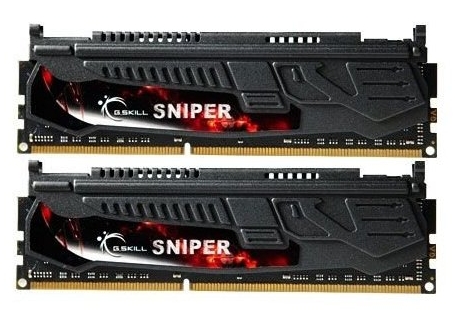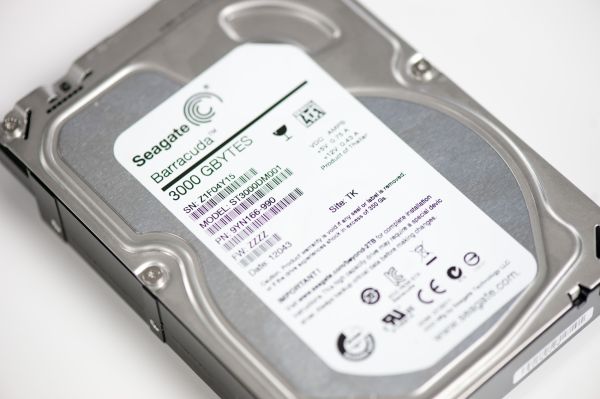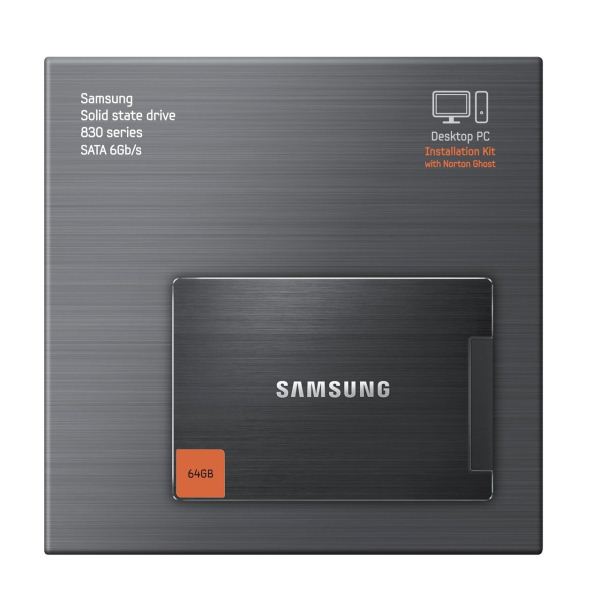AMD Llano HTPC Builders Guide
by Ganesh T S on June 5, 2012 8:02 AM ESTAlmost all present-day memory modules are at least DDR-1333. Depending on the APU chosen, the reader should go for DDR3-1600 or even DDR3-1866, as the added bandwidth can improve the iGPU performance in particular, and there is not much point in purchasing a module with lower speeds than what the APU natively supports. It is always possible to run higher rated memory modules at lower speeds if one wants to save power or reduce heat, and it is generally better to purchase modules with lower latency specifications, as this has the potential to improve performance in games and sometimes even for renderers such as madVR.
For most HTPC applications, 4GB of memory is more than enough. However, if you are repurposing the HTPC for other tasks such as intenstive video and photo editing, it might be worthwhile to invest in 8GB of memory. While performance typically does not vary between brands (assuming the same timings and clock speed), reliability might. It is therefore essential to choose the memory vendor and model carefully.
Some of the memory kits we recommend for the lower-end APUs (A4-3300 and A4-3400) are below. While all memory modules should work with all motherboards in theory, in practice that's not always the case, particularly if you're going to run low voltage modules. We recommend checking motherboard vendor compatilibity lists if you're not willing to deal with the potential need to return your memory kit for a more compatible set.
- G.SKILL Sniper Low Voltage Series 8GB (2 x 4GB) DDR3-1600: This kit operates at a lower voltage (1.25V) compared to similar kits, and can run cooler. The timing is also quite good at 9-9-9-24 when operating at 1600MHz. Coming in at $52, this is one of the best kits for a low power HTPC.

- G.SKILL ECO 8GB (4 x 2GB) DDR3-1600: This kit also operates at a lower voltage (1.35V) and has excellent timing parameters of 8-8-8-24. However, it is a quad channel kit and can only be fully utilized with an appropriate motherboard. Priced at $100 it's somewhat expensive, but it may prove more compatible for some systems than 1.25V kits like the above Sniper Low Voltage.
- AMD Entertainment Edition 2GB (1 x 2GB) DDR3-1600: This is one of the cheaper alternatives, coming in at $16. It operates at the standard 1.5V with timing parameters of 9-9-9-24.
For the higher-end APUs, we recommend memory kits rated for DDR3-1866. At these speeds, it is not possible to get low voltage kits.
- G.SKILL Ripjaws X Series 8GB (2 x 4GB): This kit comes in at $75, operates at 1.5V, and has timings of 8-9-9-24. Users have reported that it overclocks effortlessly to 2133MHz. This makes it an idea candidate for HTPCs that will also serve as gaming rigs.
- Crucial Ballistix 2GB (1 x 2GB): Coming in at $21, it is quite cheap compared to the G.SKILL kit above, but you only get one fourth the total memory. It operates at the same 1.5V and has the same timings. Of course, the drawback is that even with four of these in an appropriate motherboard, you only have 8GB of memory while the previous kit can give you 16GB.

Moving on to storage options, the reader will have to take a stance on the HDD vs. SSD debate. While a cheap SSD might sound very tempting (and may even prove excitingly fast in the initial days), the choice must be made only after careful consideration. At AnandTech, most of the SSDs that get reviewed go into production machines. I have been using an OCZ Agility 3 240GB SSD in my personal laptop. It is based on the SandForce SF-2281 controller. Unfortunately, I have experienced annoying random BSODs whenever I try to hibernate or put the laptop to sleep even with the latest firmware. A quick search on the various SSD forums indicates that SandForce-based SSDs usually don't like hibernation or sleep mode. This is just something to keep in consideration, because it is quite common to put HTPCs in sleep mode when not in operation.
If you plan to use your HTPC just as a front-end for local media residing in a NAS/optical drive, a 128GB SSD should serve you well. On the other hand, if you are planning to use your HTPC as a recording or download machine, it is suggested that you go in for a 2TB or 3TB hard drive in addition to having a 64GB SSD as a boot drive. If the HTPC is to be used in the backend as a media server/download or recording machine (and a media streamer or some other device is going to be used in the front-end), a SSD is not needed at all.
We've selected an SSD and hard drive for use with HTPCs below:
- SAMSUNG 830 Series MZ-7PC064D/AM 2.5" 64GB SSD: Samsung's 830 series was well received by us, and Samsung has a good track record of reliability. At $90, the price per GB is much higher than the budget drives, but trust us, a worry-free experience even with unusual HTPC usage scenarios is worth it. If you want more storage in your SSD, a more cost effective purchase would be the SAMSUNG 830 Series MZ-7PC256B/WW 2.5" 256GB SSD that is currently on sale for $250.
- Seagate's Barracuda 3TB (ST3000DM001): This hard drive is currently priced at $158 on Amazon. It has 3x1TB platters and delivers better performance than the initial 5x600MB hard drives. For users that like to record TV shows and/or download media files, 3TB is definitely not overkill when it comes to hard drive capacity.












76 Comments
View All Comments
TheTechSmith - Tuesday, June 5, 2012 - link
The free computer software is dead but the Boxee Box is still under active development. And yes, it streams Netflix HD if your connection is fast enough.lurker22 - Tuesday, June 5, 2012 - link
Its hardware isn't selling well. For example, Dlink's other boxee was canceled, and reviews continue to be lackluster on stability etc. Boxee won't be around for much longer...but it does work for your use so that's great.Boxee abandoned its biggest fans by dropping software development for the HTPC. I was a big fan of Boxee until they did this, however it forced me to try Plex and it's SOOOOO much better than Boxee ever was!
TheTechSmith - Wednesday, June 6, 2012 - link
Good to know. I will probably try Plex when it comes time to buy a second TV, but at the moment Boxee does everything that I need. I have encountered crashes, but it's pretty rare in my case. I wasn't aware that D-Link was working on a second box that got cancelled. I hope they can survive...T2k - Thursday, June 7, 2012 - link
Plex is a typical free pile of SHIT, they couldn't even write a proper documentation, forget built-in setup wizard.Plex is the typical fucked-up end product of a bunch of stupid, el cheapo nerds, released for free - it works if you spend enough time with it, otherwise it's a pile of shit especially if you are not so poor and usually are able to pay for something that works and comes with proper UI and support.
johnsmith9875 - Wednesday, June 13, 2012 - link
I ended up buying a Sony SMP-N200. I gave up on an HTPC because of complexity, boot time, etc. It has enough interfaces and will do DLNA so I can stream from a PC over wireless and has fairly good support for video formats. I was not impressed with Roku's selective feature removal to fit price points, and I won't touch Apple.soapisclean - Tuesday, June 5, 2012 - link
Why so big with the power supplies?I built an A6-3500 system (the 3-core version) with an 80W Pico PSU.. no extra fans spinning and adding to the noise.. and it works beautifully with Ubuntu.
treecats - Tuesday, June 5, 2012 - link
I build a HTPC for my parents with Intel Core i3-2120T/HD2000 + Foxconn SFF R40-H1 Intel Core i7 / i5 / i3 (LGA1155) Intel Socket H2(LGA1155) Intel H67 none 1 x HDMI BareboneThe machine played 1080p H.264 video files no problem at all. What do you mean by "not powerful enough for 1080p60 H.264 decoding"? I thought HD2000/3000 are specifically designed to handle high def video playback.
Any comments would be helpful! Thanks!
StevoLincolnite - Tuesday, June 5, 2012 - link
I WANT it. Unfortunately, I cannot find any in Australia.Spivonious - Tuesday, June 5, 2012 - link
WIth the prices of Ivy Bridge Celerons so low these days, why would anyone consider the hotter-running and less featured AMD LLano?Spivonious - Tuesday, June 5, 2012 - link
Sorry, meant Sandy Bridge Celerons.